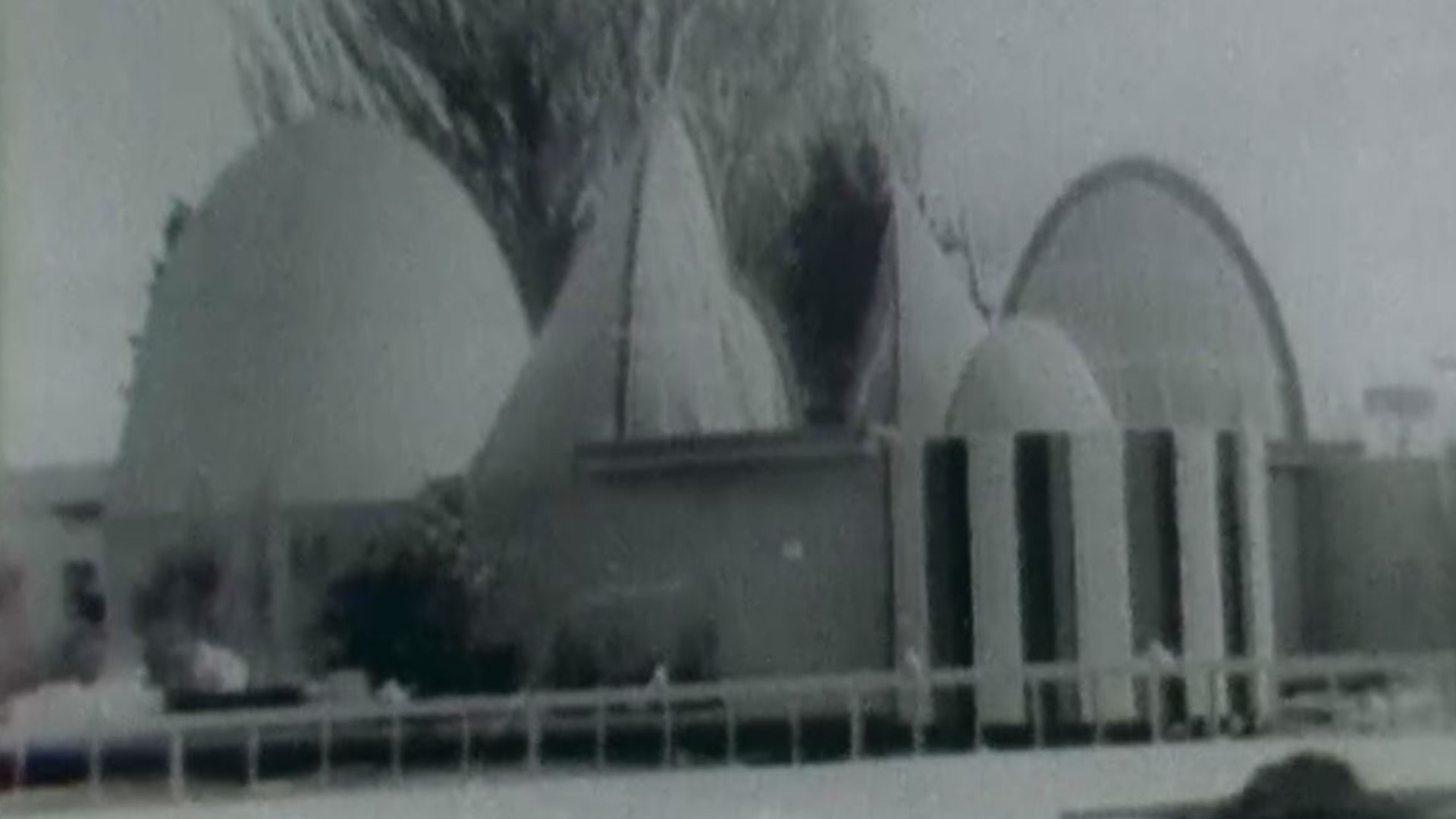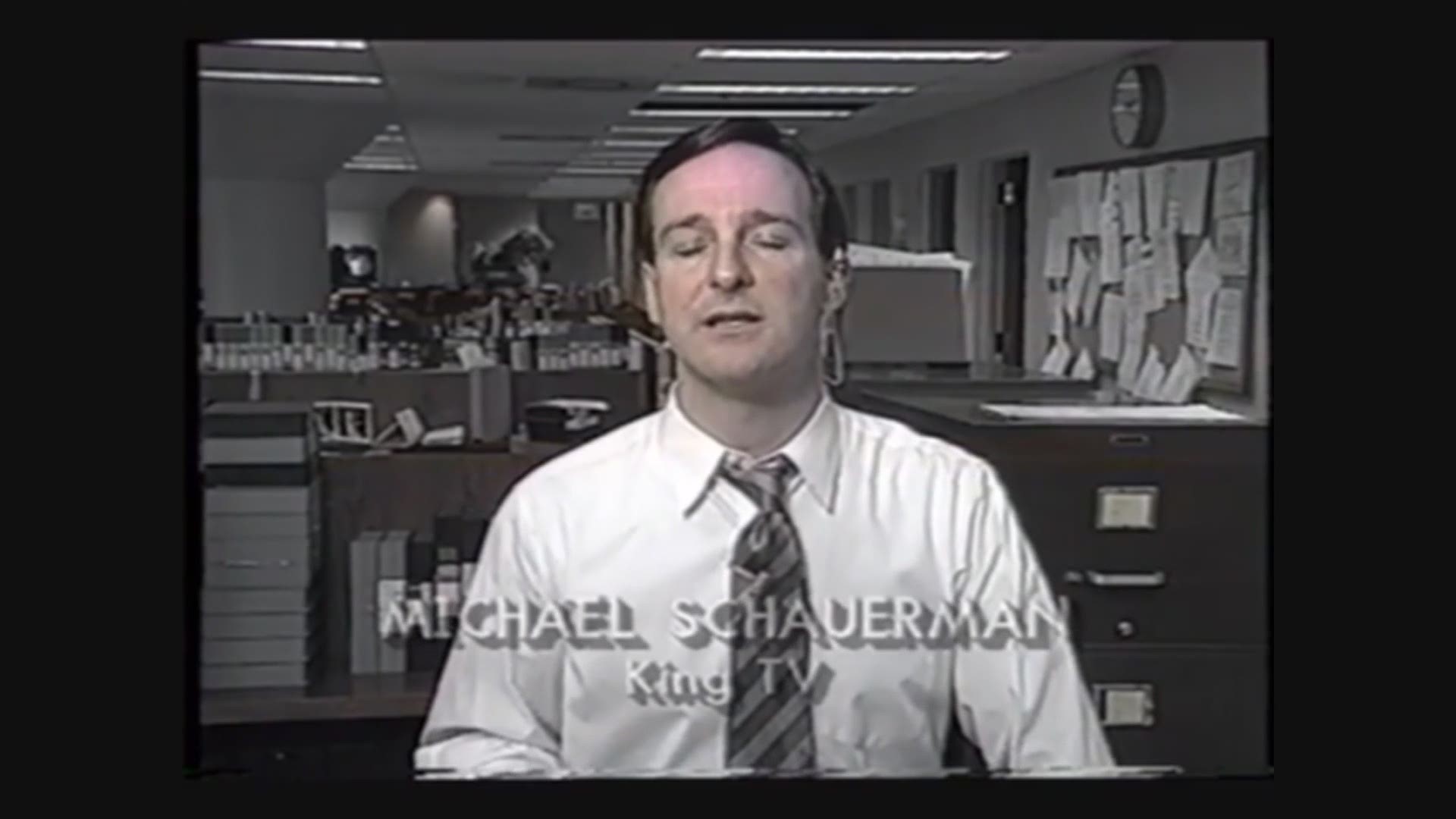SEATTLE — The Space Needle is celebrating a big birthday Thursday, 60 years.
The Space Needle has been the landmark tourist attraction in Seattle, welcoming more than 60 million visitors since it opened its gates on April 21, 1962, at 400 Broad Street. Nearly 10 million people visited during the six-month run of the fair.
Here's a look back at the Space Needle's history and the events that helped shape the iconic Seattle skyline. For more information on the history of the Space Needle, visit spaceneedle.com and historylink.org.
1959
Seattle hotel executive Edward E. Carlson, a chief organizer of the 1962 World’s Fair, traveled to Stuttgart, Germany, and was inspired by a broadcast tower with a restaurant.
Carlson doodled an idea for the upcoming fair on a hotel cafe napkin, calling it a “Space Needle.”
Carlson worked with architect John "Jack" Graham, Jr., designer of the Northgate Mall, to bring the Space Needle to life.
Graham and his team worked through the sketches before a final design was reached just a year and a half before the World’s Fair. Carlson's original sketches included designs of a landed UFO, a tethered balloon and a cocktail shaker.
1961
The World's Fair promoters tried to gain interest from King County to fund the construction, but the county declined.
Five northwest business leaders Bagley Wright, Ned Skinner, Norton Clapp, John Graham Jr. and Howard S. Wright formed the Pentagram Corporation to take over the project.
Since the Space Needle was privately funded, it proved difficult to find a sizable plot of land on the fairgrounds to use. Just before the search was abandoned, the site of an old fire department alarm station was discovered and sold to investors for $75,000.
Construction began in April with the largest continuous concrete pour yet attempted on the West Coast, 5,850 tons delivered by 467 trucks over 12 hours.
The basic structure was completed in December, eight months after construction began. Total development and construction cost $4.5 million.


1962
On April 21, 1962, the Space Needle officially opened for the first day of the World's Fair. It's estimated the tower saw 2.65 million visitors during the initial expo.
The Space Needle was originally colored with “Orbital Olive,” “Re-entry Red,” and “Galaxy Gold.”
The tower's base housed an exhibit devoted to “Dentistry Through the Ages of Man" during the fair.
The mast that originally topped the Space Needle lit up at night in rainbow colors.


1989
KING-TV's Almost Live comedy show ran a breaking news skit as an April Fools joke, reporting that the Space Needle had fallen over. The skit included a mock-up of a destroyed Space Needle with debris.
1999
The Space Needle unveiled its Legacy Lights. The light beams shine upwards to honor national holidays and special occasions. Two years later in 2001, the lights were lit for eleven days straight following the Sept. 11 attack on the World Trade Center in New York City.
On the Space Needle's 37th birthday, the City’s Landmarks Preservation Board named it an official City of Seattle landmark.
2000
A $20 million revitalization project was completed in 2000. The project included observation deck improvements, construction of the pavilion level, a retail store and the SkyCity restaurant.
2017
The Space Needle underwent its largest renovation project in 2017. The project constructed the Oculus Stairs and The Loupe, the world's first and only rotating glass floor.
The project also revealed the tower's internal structure, a call back to its original conceptual designs.


2021
T-Mobile hosted the Space Needle's first augmented reality show for the city's live New Year's celebration. The show aired on KING 5.


